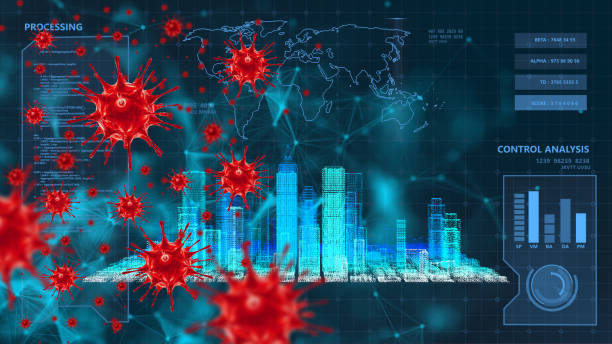Although he was not referring to viral infections or the current pandemic, he could have. Even epidemiologists, scientists and infectious disease specialists have struggled to predict when new viruses will emerge (think COVID-19) or when the old ones will return (think Polio) and how to get this information out in time to make an impact. What if they could? A tool already available called wastewater testing is promising. The way we use the results could help to predict or rein in the next COVID spike.
Covid: When is the next uptick in economic activity?
The US has been reporting over 100,000 new cases of COVID-19 and 300 deaths every day for months. The actual number of cases is likely higher since testing rates have dropped and positive home tests are not included in official counts. Further increases in cases are likely with new variants and numbers like these.
But when?
You might see new, highly contagious variants emerge in the coming weeks. Perhaps in the fall or winter as people spend more time indoors. Perhaps the virus will surprise us again, and we’ll have to wait until next year for it to return.
The biggest challenge in controlling the COVID-19 epidemic is that many cases are already ongoing for a long time before we notice an increase in infection rates. The infection can spread quickly, even if there are no symptoms.
It’s possible to take preventive steps if we can predict the next uptick. Your stool, faeces, or poop is where it all comes in.
Waterworks can be used to detect viral outbreaks
It is easy to see that a person can often detect a virus in their stool if they have a viral infection. It is possible to test the wastewater of a city or community for virus and see if it is increasing over time.
This method has been used since 1940, when Polio was a major concern. However, wastewater testing can be used to detect various types of Hepatitis, flulike norovirus and even measles.
Over time, the methods for testing wastewater have improved. First attempts were to create viruses from water samples. More recently, the focus has shifted towards the detection of genetic material.
In wastewater, Polio and COVID
London was tested for the virus responsible for Polio in June 2022. This is a potentially fatal or disabling disease. Although no cases of Polio are yet confirmed in London, the discovery prompted an investigation into where and how the virus might have spread to others.
After an active case of Polio in an adult, the US government began testing water for COVID levels in a New York county.
Is wastewater testing useful in detecting and tracking SARS CoV2, which is the virus that causes COVID-19,? It has . The levels of the virus in wastewater closely mirror infection rates in many cities across the globe. In some cases, this has been predicted before any community even notices that cases are increasing. In its regular reporting of COVID-19 infections rates, the CDC now includes data from wastewater treatment plants.
The results of wastewater testing can be combined with other information such as infection rates reported by hospitals or doctors’ offices, trends in infection in nearby areas, and vaccination rates. This information gives public health officials better information about a variety of worrying viral infections, as well as where the cases may be heading.
What are the benefits of wastewater data?
Public health officials, researchers, and healthcare providers can use the detection of rising levels or presence of viruses in wastewater to aid their work.
- You can predict when surges will occur and when they’ll peak
- Update messaging about prevention measures (for instance, advice to wear masks in public places or to keep oneself physically away)
- Request more antiviral and vaccine medications
- Encourage more testing
- Identify new variants.
It may be especially important to inform people if there are any rising cases in their area. This is especially true for people who have no health insurance or primary care doctors. When undercounting is prevalent, such as with COVID-19, wastewater testing can prove to be very useful.
Future wastewater testing will be able to pinpoint the source of an outbreak in a particular neighbourhood or residential area, such as a nursing facility or prison.

